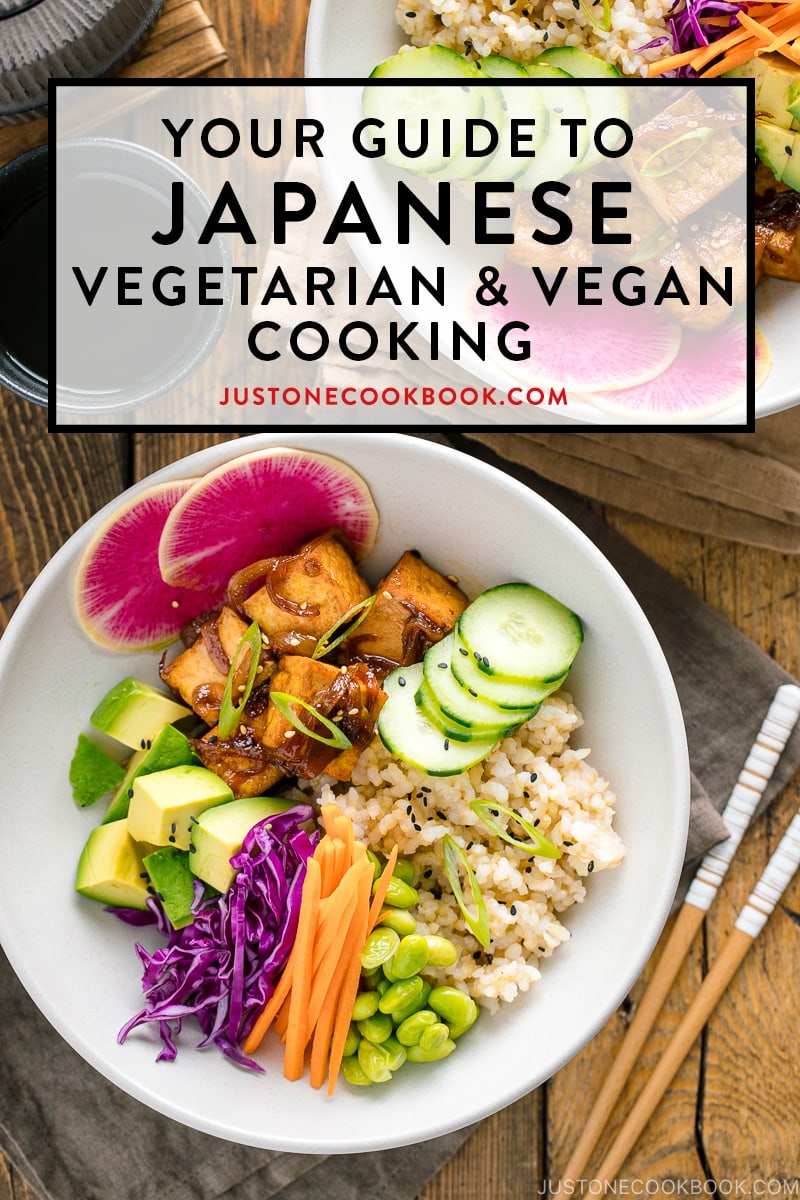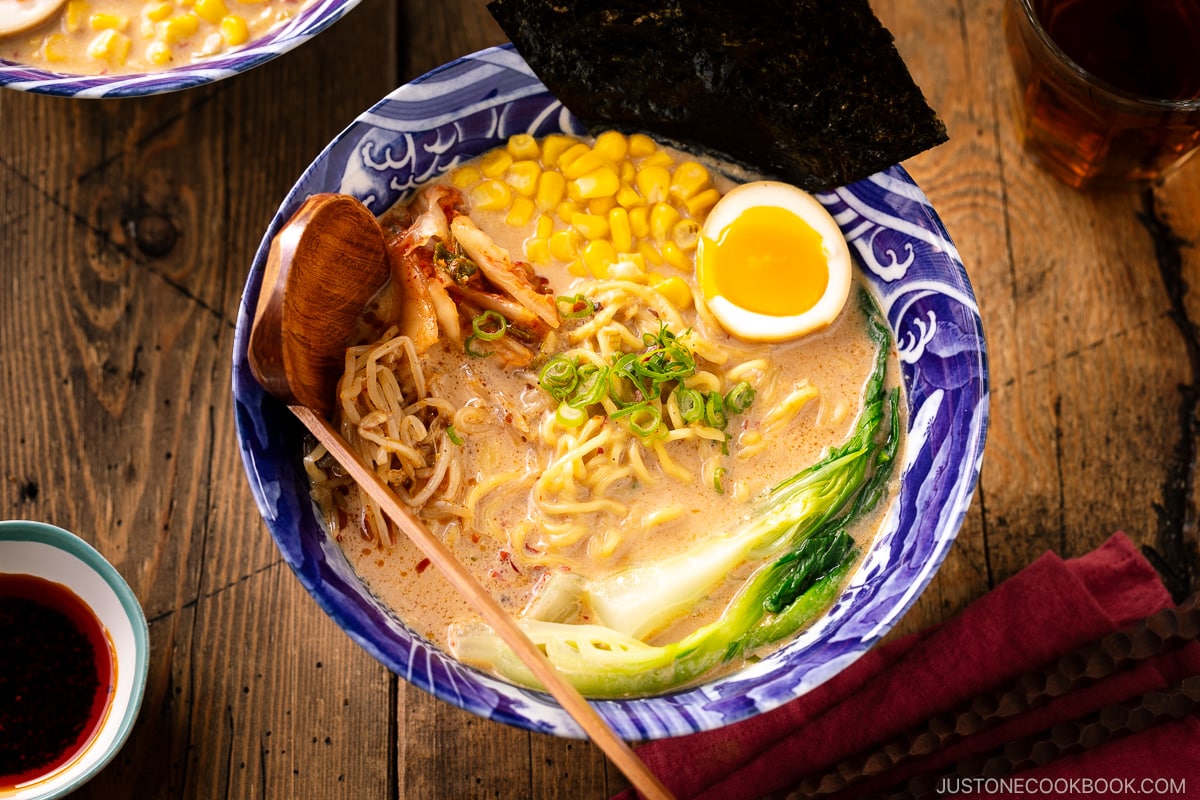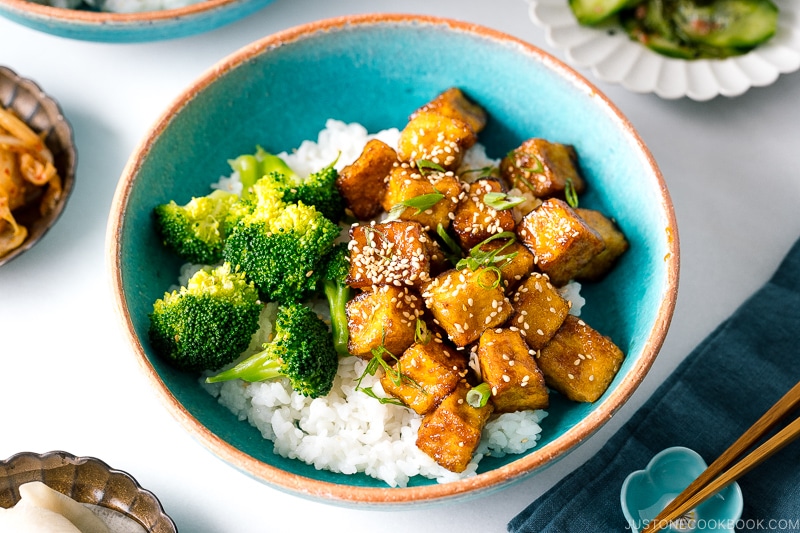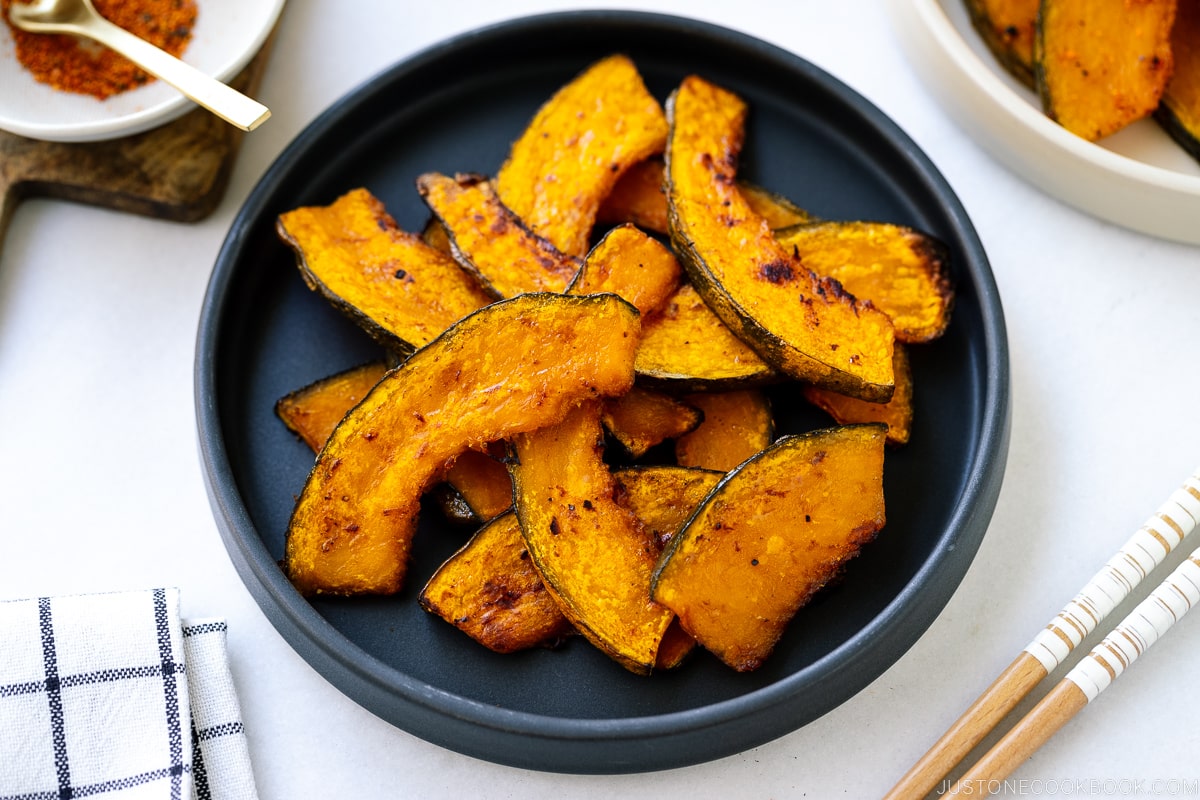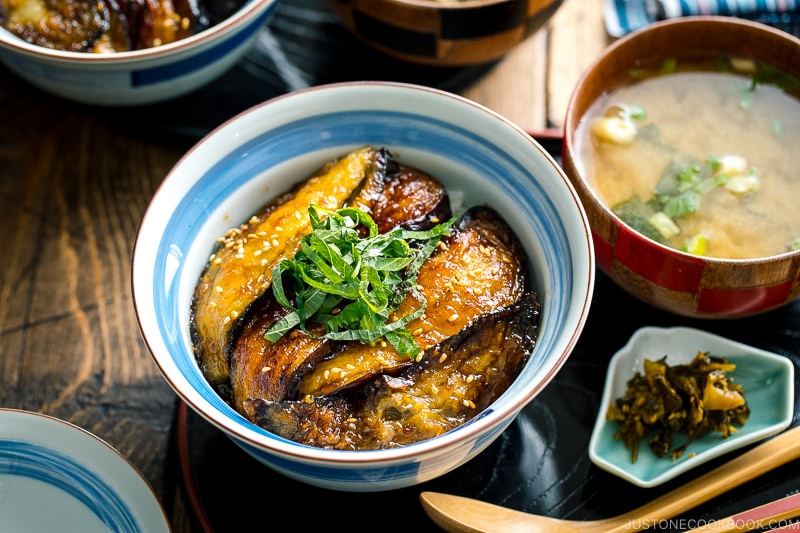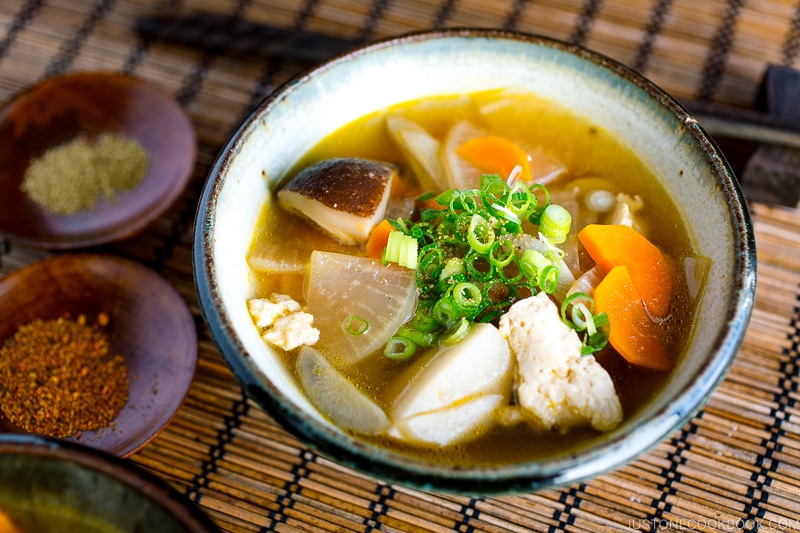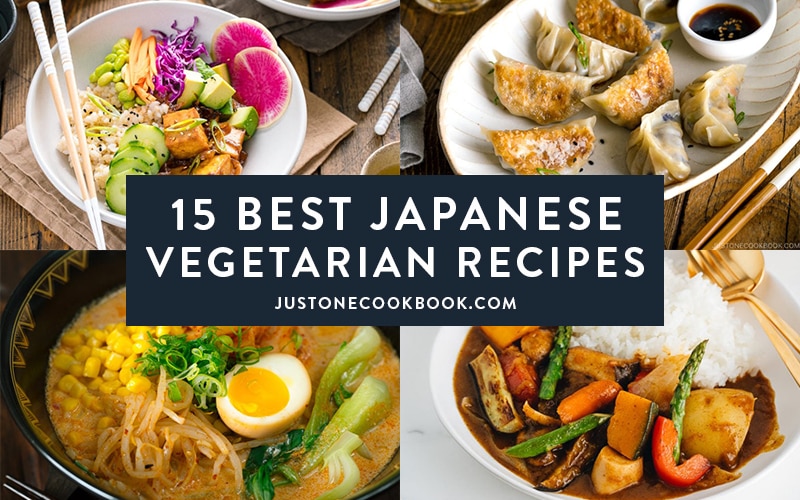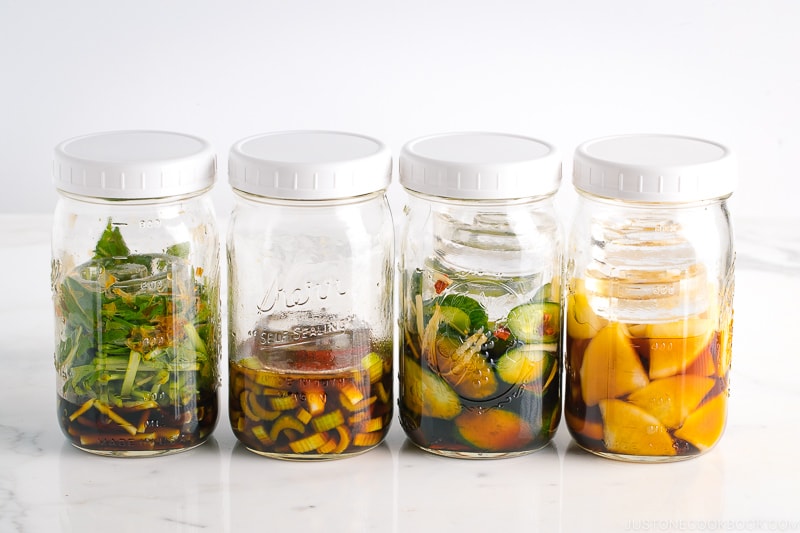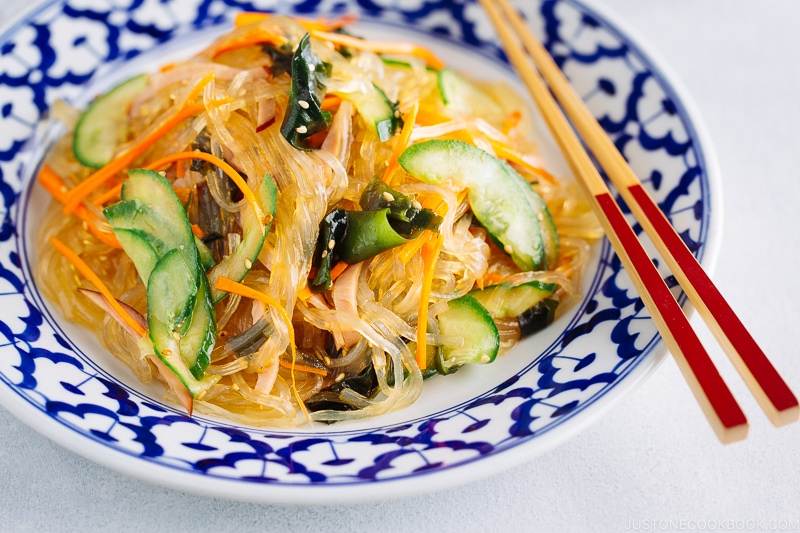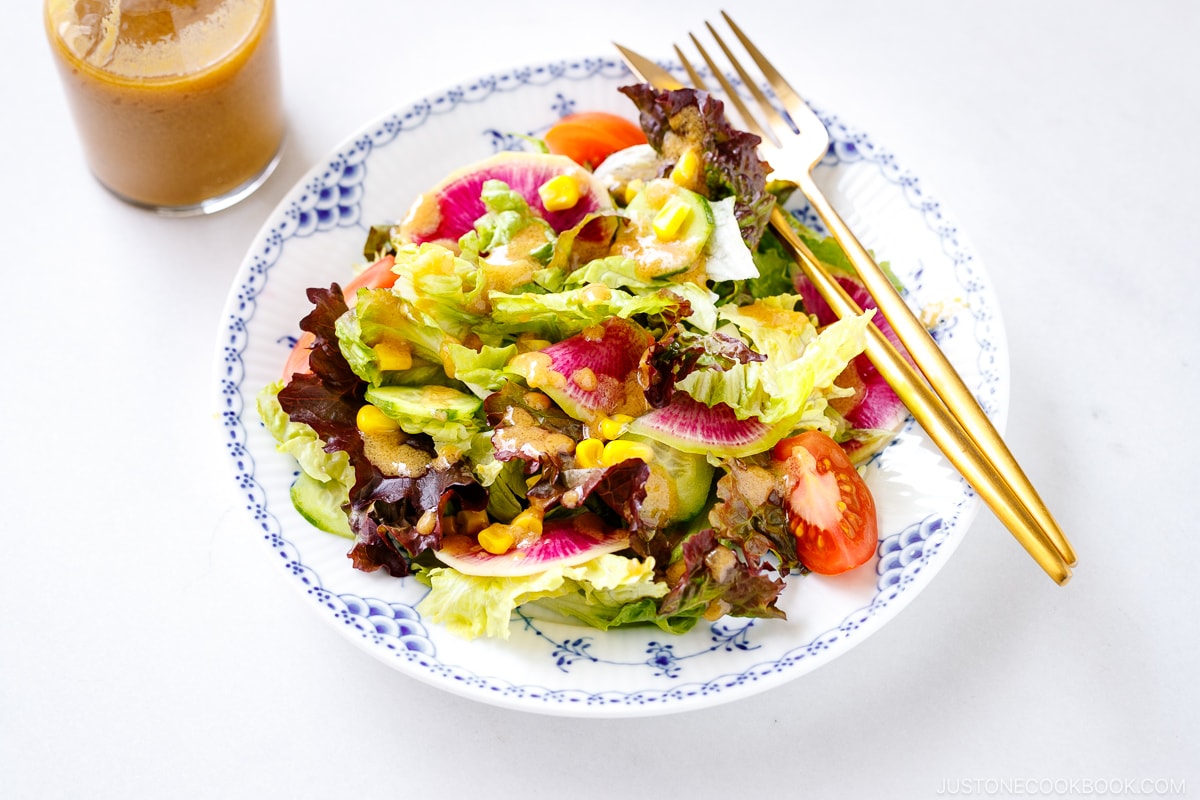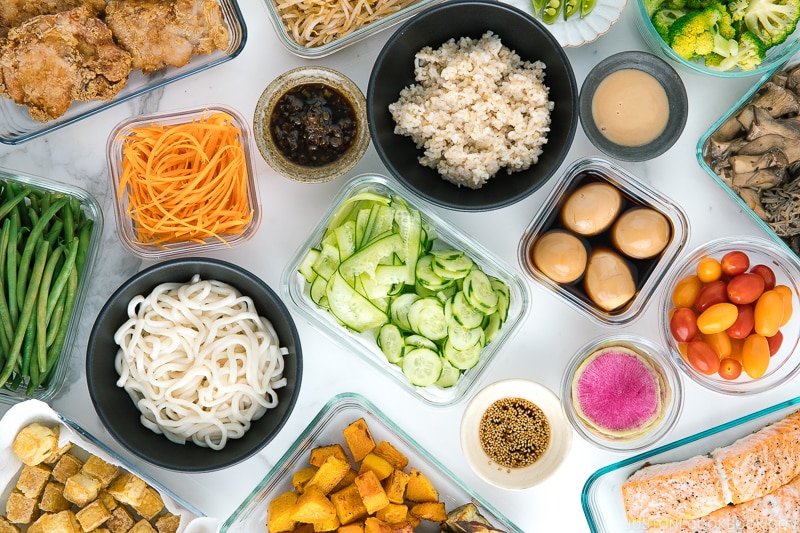Whether vegetarian, vegan, or simply looking to cut back on meat, you’ve come to the right place! Why Japanese cuisine? Because a Japanese vegetarian diet has the potential to be incredibly varied and satisfying. Most importantly, it leans heavily on many superfoods ideal for a plant-based lifestyle. Here, we’ve put together a guide specifically for anyone who wishes to expand their repertoire in Japanese vegetarian and vegan cooking. We hope this will be a source of excitement and the perfect opportunity to discover new flavors and a whole new culture!
7 Tips for a Japanese Vegetarian and Vegan Cooking
1. Build a balanced meal by putting nutrients in mind
Balance has always been the anchor of Japanese cuisine, and this should also be the guiding principle for anyone following a vegetarian or vegan diet. In a typical Japanese meal, we focus on including various foods such as grains, proteins, and vegetables. A wholesome diet fills you up and provides the well-rounded nutrients your body needs. When you feel more satisfied, you don’t constantly crave snacks or sweet, sugary treats.
2. Consider flavor & texture
Food has a powerful way of influencing how you feel. When you eat healthy and delicious food, you’ll naturally feel good. But first, you want your food to be exciting! An easy way to make vegetables or tofu exciting is to use little flavor enhancers. Sometimes, just using enough salt will get you halfway there. Simple touches, like a savory soy sauce glaze, can transform almost any meal with great results. Aromatics like garlic, ginger, green onions, or even a sprinkle of sesame seeds can also do the trick. Secondly, consider texture. Mix vegetables and layer them with your plant protein. When your meal has both flavor and texture, you’ll feel satisfied.
3. Embrace umami
Since Just One Cookbook is a Japanese recipe blog, the word ‘umami‘ is almost the default term we use to describe everything that is full of savory deliciousness or the so-called fifth taste. The natural umami in meat and seafood is satiating and makes you crave the food. That’s why people often say, ‘I’m so hungry that I can easily chow down a giant hamburger.’ The good news is that Japanese cuisine uses many plant-based ingredients high in umami. Soy sauce, dashi, and miso are staple seasonings. Additionally, edamame, mushrooms, and edible seaweeds are full of umami. These ingredients empower you to cook everyday Japanese vegetarian meals that are not lacking in flavor.
4. Eat seasonally
The most wonderful thing about vegetarian and vegan cooking is the seasonal bounty. When in-season vegetables and fruits are at their freshest, you can savor their natural sweetness and flavors. They also offer optimal nutrients. So, seek out produce from your local farmers’ market. Better still, preserve the seasonal produce by pickling.
5. Learn different cooking techniques
Challenge yourself and explore cooking methods like steaming, stir-frying, deep-frying, and simmering. These skills come in handy for Japanese cooking. The same old broccoli can taste wondrously amazing when it gets a new treatment. Besides roasting kabocha squash, try simmering, stir-frying, or deep frying. When you keep things exciting, it’s easier to follow through. Your vegetarian and vegan dinners can be much more fun and inspiring!
6. Swap this for that to make it vegetarian
Don’t turn away immediately when you see a delicious recipe that has a few slices of meat! If something looks good, you can potentially turn it into a vegetarian or vegan dish to your liking. For example, my Yakisoba recipe is easily adaptable to vegetarian or vegan. Simply leave out the meat, or swap it with mushrooms. Fancy the sauce I used in this meatball recipe? Use it over your vegetarian meatball. Drooling over this Wanpaku sandwich? Swap the meat with roasted sweet potato.
7. Fresh ideas
For those who like to follow a template, you can even create easy-to-follow dinner themes for your vegetarian and vegan cooking. With each recipe, there is always room for interpretation, so they’ll never become monotonous. Here are just some examples:
Rice Bowl Monday – Vegan Poke Bowl and Soy-Glazed Eggplant Donburi Noodle Tuesday – Soba Noodle Salad or Kitsune Udon or Shiso Garlic Pasta One-Pot Wednesday – Vegetarian Japanese Curry or Kabocha Gratin or Curried Mushroom Doria Thrifty Thursday – Leftovers (Vegetarian Japanese Curry Udon) BBQ Friday OR Hot Pot Friday – Vegetarian style teppanyaki or Shabu Shabu Soup & Salad Saturday or Sandwich Saturday – Kabocha miso soup or Tofu Salad with Sesame Ponzu Dressing Street Food Fun Sunday OR ‘Ichiju Sansai’ Sunday – Indulge in your favorite Japanese street foods such as Vegetarian Okonomiyaki or Vegetable Gyoza or Vegetable Tempura. Or take the time to make a full spread of Japanese meal. Read our Ichiju Sansai post for vegetarian ideas.
Pantry Ingredients to Stock Up
The Japanese pantry items are not much different for non-vegetarian cooking, but we’ve highlighted some staples that will become your new best friends in the kitchen!
Soy sauce Rice vinegar Ponzu Dashi (Japanese soup stock) — Make Vegan Dashi with kombu and dried shiitake mushrooms! Miso Mirin Sake Sesame oil Rice and noodles — Japanese short-grain rice, soba noodles, udon noodles, somen noodles, ramen noodles, shirataki noodles, harusame (Japanese glass noodles), pasta Mushrooms — shiitake, shimeji, king oyster, enoki, matsutake, and maitake, etc Tofu and tofu products — aburaage Soybeans — edamame, azuki beans, natto (fermented soybeans), Edible seaweeds — wakame seaweed, hijiki seaweed, nori seaweed Japanese curry roux Shichimi Togarashi and Yuzu Kosho — for a kick of spice
Substitutions & Resources
Japanese Grocery Stores Around the World 26 Japanese Ingredients Pantry Ingredients to Add to Your Shopping List Discover Seaweed: The Essential Ingredient of the Japanese Diet Top 5 Japanese Superfoods Ingredient Substitution for Japanese Cooking
Shojin Ryori — Buddhist Temple Cuisine
It’s also worth noting that the vegetarian and vegan diet has a long history in Japanese food culture. The best example is the Buddhist Temple Cuisine known as shōjin ryōri (精進料理). Introduced by the Buddhist monks around 552 CE, Shiojin Ryori was once the dominant diet in Japan and consuming meat and fish was not allowed. The cuisine is guided by a broad philosophical ethos and makes the best of seasonal and umami ingredients, significantly influencing the broader vegetarian cuisine in Japan. We’ll need a separate post to talk about shōjin ryōri, but if you’re vegetarian or vegan, you will want to check out this temple cuisine when visiting Japan.
Popular Japanese Vegetarian Recipes to Get You Started
Our Best Japanese Vegetarian Recipes You’ll find a scrumptious collection of our fan favorites, including vegetarian ramen, vegan poke bowl, vegetable gyoza, vegetarian curry, and more!
More Vegetarian & Vegan Adaptable Recipes You’ll Like
Discover A Whole New World of Japanese Pickles Inspiring Japanese Salads Condiments and Sauces to Enliven Your Meals Meal Prep DIY Bowls
Questions or Recipe Request?
We’d love to hear from you! Leave your questions or any vegetarian/ vegan recipe requests in the comment box below.
